Surely a foreword of explanation is called for from one who has the temerity to offer a surfeited public still another book on wild flowers.Inasmuch as science has proved that almost every blossom in the world is everything it is because of its necessity to attract insect friends or to repel its foes - its form, mechanism, color, markings, odor, time of opening and closing, and its season of blooming being the result of natural selection by that special insect upon which each depends more or less absolutely for help in perpetuating its species - it seems fully time that the vitally important and interesting relationship existing between our common wild flowers and their winged benefactors should be presented in a popular book.
Is it enough to know merely the name of the flower you meet in the meadow? The blossom has an inner meaning, hopes and fears that inspire its brief existence, a scheme of salvation for its species in the struggle for survival that it has been slowly perfecting with some insect's help through the ages.It is not a passive thing to be admired by human eyes, nor does it waste its sweetness on the desert air.It is a sentient being, impelled to act intelligently through the same strong desires that animate us, and endowed with certain powers differing only in degree, but not in kind, from those of the animal creation.Desire ever creates form.
Do you doubt it? Then study the mechanism of one of our common orchids or milkweeds that are adjusted with such marvelous delicacy to the length of a bee's tongue or of a butterfly's leg;learn why so many flowers have sticky calices or protective hairs; why the skunk cabbage, purple trillium, and carrion flower emit a fetid odor while other flowers, especially the white or pale yellow night bloomers, charm with their delicious breath;see if you cannot discover why the immigrant daisy already whitens our fields with descendants as numerous as the sands of the seashore, whereas you may tramp a whole day without finding a single native ladies' slipper.What of the sundew that not only catches insects, but secretes gastric juice to digest them? What of the bladderwort, in whose inflated traps tiny crustaceans are imprisoned, or the pitcher plant, that makes soup of its guests?
Why are gnats and flies seen about certain flowers, bees, butterflies, moths or humming birds about others, each visitor choosing the restaurant most to his liking? With what infinite pains the wants of each guest are catered to! How relentlessly are pilferers punished! The endless devices of the more ambitious flowers to save their species from degeneracy by close inbreeding through fertilization with their own pollen, alone prove the operation of Mind through them.How plants travel, how they send seeds abroad in the world to found new colonies, might be studied with profit by Anglo-Saxon expansionists.Do vice and virtue exist side by side in the vegetable world also? Yes, and every sinner is branded as surely as was Cain.The dodder, Indian pipe, broom**** and beech-drops wear the floral equivalent of the striped suit and the shaved head.Although claiming most respectable and exalted kinsfolk, they are degenerates not far above the fungi.In short, this is a universe that we live in;and all that share the One Life are one in essence, for natural law is spiritual law."Through Nature to God," flowers show a way to the scientist lacking faith.
Although it has been stated by evolutionists for many years that in order to know the flowers, their insect relationships must first be understood, it is believed that "Nature's Garden" is the first American work to explain them in any considerable number of species.Dr.Asa Gray, William Hamilton Gibson, Clarence Moores Weed, and Miss Maud Going in their delightful books or lectures have shown the interdependence of a score or more of different blossoms and their insect visitors.Hidden away in the proceedings of scientific societies' technical papers are the invaluable observations of such men as Dr.William Trelease of Wisconsin and Professor Charles Robertson of Illinois.To the latter especially, I am glad to acknowledge my indebtedness.














